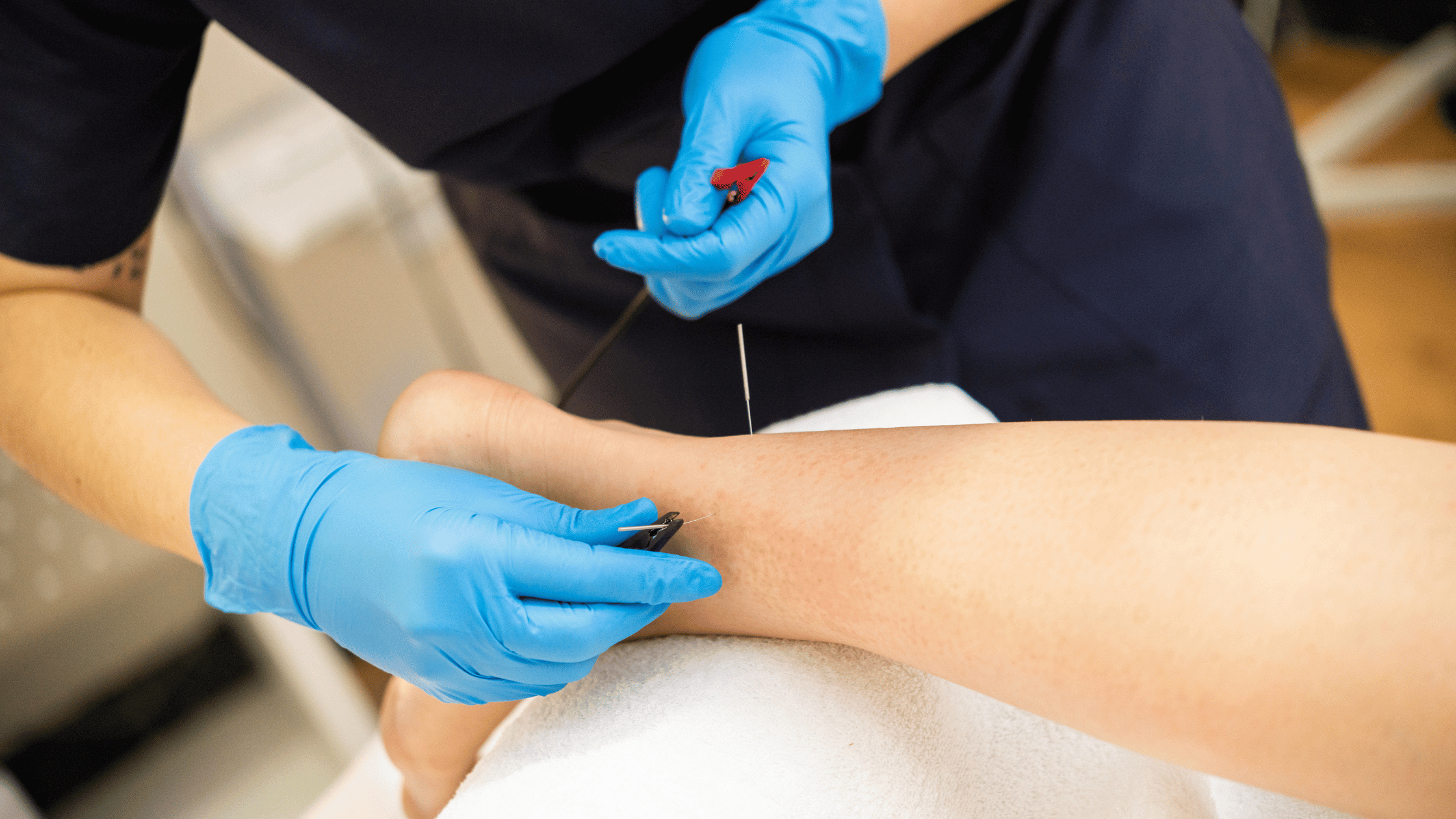Licensed Physical Therapist, PT, MSPT // Certified Dry Needling Specialist / Clinical Director of EW Motion Therapy Hoover
Plantar fasciitis, a common ailment affecting the foot, can significantly impact your daily life, limiting mobility and causing discomfort. For those seeking relief, dry needling has emerged as a promising treatment, especially when combined with physical therapy. We have many physical therapists at EW Motion Therapy who are certified in dry needling, and they may suggest it as part of your treatment. You may decide that our services don’t fit your needs, but you can still read on as we discuss plantar fasciitis, explore the potential of dry needling, and examine how it works with physical therapy to manage this condition effectively.
Understanding plantar fasciitis
Plantar fasciitis is characterized by pain in the heel and bottom of the foot, often most significant in the morning or after sitting. The pain is related to inflammation of the plantar fascia, which comprises several thick layers of connective tissue that connect the heel bone to the ends of the long bones of the foot. This inflammation is usually due to overuse, strain, or biomechanical issues.
Risk factors and common symptoms
Several factors increase the risk of developing plantar fasciitis. These include:
- Age: The condition is most common in individuals between 40 and 60.
- Types of exercise: Activities that place a lot of stress on the heel and attached tissue — like long-distance running, ballet dancing, and aerobic dance — can contribute to the onset of plantar fasciitis.
- Foot mechanics: Flat feet, a high arch, or even an abnormal walking pattern can affect how your weight spreads across your foot and stress the plantar fascia.
- Occupational hazards: People who spend most of their working hours walking or standing on hard surfaces can damage their plantar fascia.
- Obesity: Excess weight puts extra stress on your plantar fascia.
The most common symptoms of plantar fasciitis include:
- Sharp heel pain: Typically described as a strong, stabbing pain in the bottom of the foot near the heel.
- Pain on first steps: People often experience pain and stiffness in the morning or after sitting for a long time.
- Pain after exercise: Pain might not be felt during exercise but just after stopping.
- Tenderness: The bottom of the foot may be tender to touch.
Dry needling for managing plantar fasciitis
Dry needling involves inserting fine needles into specific areas, known as trigger points, in the muscles. Unlike acupuncture, which is based on traditional Chinese medicine, dry needling is grounded in Western medicine principles and focuses on relieving muscle pain and spasms.
The process of dry needling helps release tension in tight muscle fibers, promoting blood flow and reducing inflammation. This can lead to decreased pain and improved function in the affected area, relieving those suffering from plantar fasciitis.
Here are a couple of specific ways that dry needling alleviates symptoms of plantar fasciitis:
Pain reduction
Dry needling can effectively reduce the pain associated with plantar fasciitis. Targeting trigger points in the foot and calf muscles can relieve tension and reduce inflammation in the plantar fascia, offering immediate and sometimes long-lasting pain relief.
Improved mobility
Reduced pain and muscle tension through dry needling can improve foot mobility and function. This may benefit those individuals whose daily activities are limited due to plantar fasciitis.
Integrating dry needling with physical therapy
Dry needling as part of your physical therapy program may be a very effective tool for treating plantar fasciitis. While dry needling addresses muscle tension and pain, physical therapy focuses on exercises and techniques to strengthen foot muscles, improve flexibility, and correct biomechanical issues.
Personalized treatment plans
A thorough evaluation by a physical therapist is the first step. This assessment includes examining foot structure, gait, and flexibility and identifying specific areas of pain and stiffness.
Based on the assessment, the physical therapist designs a treatment plan that may include:
- Dry needling sessions: Focused on relieving pain and muscle tension in the foot and calf.
- Stretching exercises: Targeting the plantar fascia, Achilles tendon, and calf muscles to improve flexibility and reduce tension.
- Strengthening exercises: Aimed at enhancing the strength of the foot and lower leg muscles to support proper foot mechanics.
- Orthotic recommendations: If necessary, advice on supportive footwear or custom orthotics to improve foot alignment and distribution of pressure.
- Gait training: Guidance on walking techniques to reduce stress on the plantar fascia.
- Activity modification advice: Suggestions on modifying activities and incorporating rest periods to allow the foot to heal.
Regular follow-up sessions will be scheduled to monitor progress, adjust treatments, and advance exercises as needed. The physical therapist will also evaluate the effectiveness of dry needling and make modifications if necessary. Patients will be encouraged to perform specific exercises at home to complement the in-clinic treatment. These may include stretching routines and foot-strengthening exercises.
Dry needling, when combined with physical therapy, can be a very effective method for managing the symptoms of plantar fasciitis. This approach can significantly improve pain, mobility, and overall quality of life by addressing the direct pain points and the underlying biomechanical issues. As with any medical treatment, it's essential to consult with a healthcare professional to determine the best course of action for your specific situation. Discuss dry needling with your physical therapist as part of a comprehensive plan tailored to your needs. Our ultimate goal at EW Motion Therapy is to help our clients reduce pain and regain mobility, and dry needling can often be an important part of a treatment plan. To learn more about dry needling, click the button below to download our answers to 20 frequently asked questions.



